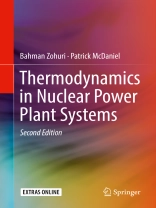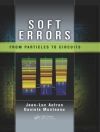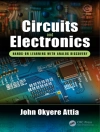This revised book covers the fundamentals of thermodynamics required to understand electrical power generation systems, honing in on the application of these principles to nuclear reactor power systems. This text treats the fundamentals of thermodynamics from the perspective of nuclear power systems. In addition to the Four Laws of Thermodynamics, it discusses Brayton and Rankine power cycles in detail with an emphasis on how they are implemented in nuclear systems. Chapters have been brought up-to-date due to significant new results that have become available for intercooled systems and combined cycles and include an updated steam table. The book starts with basic principles of thermodynamics as applied to power plant systems. It then describes how Nuclear Air-Brayton systems will work. It documents how they can be designed and the expected ultimate performance. It describes several types of Nuclear Air-Brayton systems that can be employed to meet different requirements andestimates component sizes and performance criteria for Small Modular Reactors (SMR) based on the Air-Brayton concept. The book provides useful insight into the engineering of nuclear power systems for students and the tabular data will be of great use to practicing engineers.
Inhaltsverzeichnis
Definitions and Basic Principles.- Properties of Pure Substances.- Mixture.- Work and Heat.- First Law of Thermodynamics.- The Kinetic Theory of Gases.- Second Law of Thermodynamics.- Reversible Work, Irreversibility, and Exergy (Availability).- Gas Kinetic Theory of Entropy.- Thermodynamic Relations.- Combustion.- Heat Transfer.- Heat Exchangers.- Gas Power Cycles.- Vapor Power Cycles.- Circulating Water Systems.- Electrical System.- Nuclear Power Plants.- Nuclear Fuel Cycle.- The Economic Future of Nuclear Power.- Safety, Waste Disposal, Containment, and Accidents.- Appendix A: Table and Graphs Compilations.- Index.
Über den Autor
Dr. Bahman Zohuri is currently University of New Mexico, Department of Electrical and Computer Engineering, while at the Galaxy Advanced Engineering, Inc. a consulting company that he stared himself in 1991 when he left both semiconductor and defense industries after many years working as a chief scientist. After graduating from University of Illinois in field of Physics and Applied Mathematics, he joined Westinghouse Electric Corporation where he performed thermal hydraulic analysis and natural circulation for Inherent Shutdown Heat Removal System (ISHRS) in the core of a Liquid Metal Fast Breeder Reactor (LMFBR) as a secondary fully inherent shut system for secondary loop heat exchange. All these designs were used for Nuclear Safety and Reliability Engineering for Self-Actuated Shutdown System. He designed the Mercury Heat Pipe and Electromagnetic Pumps for Large Pool Concepts of LMFBR for heat rejection purpose for this reactor around 1978 where he received a patent for it. He later on was transferred to defense division of Westinghouse where he was responsible for the dynamic analysis and method of launch and handling of MX missile out of canister. The results are applied to MX launch seal performance and muzzle blast phenomena analysis (i.e. missile vibration and hydrodynamic shock formation). He also was involved in analytical calculation and computation in the study of Nonlinear Ion Wave in Rarefying Plasma. The results are applied to the propagation of ‚Soliton Wave‘ and the resulting charge collector traces, in the rarefactions characteristic of the corona of the a laser irradiated target pellet. As part of his graduate research work at Argonne National Laboratory, he performed computation and programming of multi-exchange integral in surface physics and solid state physics. He holds different patent in areas such as diffusion processes and design of diffusion furnace while he was senior process engineer working for different semiconductor industries such as Intel, Varian, and National Semiconductor corporations. Later on, he joined Lockheed Missile and Aerospace Corporation as Senior Chief Scientist. At this position, he was responsible for Senior in R&D and the study of vulnerability, survivability and both radiation and laser hardening of different components of payload (i.e. IR Sensor) for Defense Support Program (DSP), Boost Surveillance and Tracking Satellite (BSTS) and Space Surveillance and Tracking Satellite (SSTS) against laser or nuclear threat. While in there, he also studied and performed the analysis of characteristics of laser beam and nuclear radiation interaction with materials, Transient Radiation Effects in Electronics (TREE), Electromagnetic Pulse (EMP), System Generated Electromagnetic Pulse (SGEMP), Single-Event Upset (SEU), Blast and, Thermo-mechanical, hardness assurance, maintenance, device technology.
He did few years of consulting under his company Galaxy Advanced Engineering with Sandia National Laboratories (SNL), where he was supporting development of operational hazard assessments for the Air Force Safety Center (AFSC) in connection with other interest parties. Intended use of the results was their eventual inclusion in Air Force Instructions (AFIs) specifically issued for Directed Energy Weapons (DEW) operational safety. He completed the first version of a comprehensive library of detailed laser tools for Airborne Laser (ABL), Advanced Tactical Laser (ATL), Tactical High Energy Laser (THEL), Mobile/Tactical High Energy Laser (M-THEL), etc.
He also was responsible on SDI computer programs involved with Battle Management C3I and artificial Intelligent, and autonomous system. He is author few publications and holds various patents such as Laser Activated Radioactive Decay and Results of Thru-Bulkhead Initiation.
Recently he has published two other books with CRC and Francis Taylor on the subject of;
1. Heat Pipe Design and Technology: A Practical Approach
2. Dimensional Analysis and Self-Similarity Methods
3. Directed Energy Weapons Technologies
Dr. Patrick Mc Daniel is currently adjunct and research professor at Department of Nuclear Engineering, University of New Mexico. Patrick began his career as a pilot and maintenance officer in the USAF. After leaving the Air Force and obtaining his doctorate at Purdue University, he worked at Sandia National Laboratories in fast reactor safety, integral cross section measurements, nuclear weapons vulnerability, space nuclear power, and nuclear propulsion. He left Sandia to become the technical leader for Phillips Laboratory’s (became part of Air Force Research Laboratory) Satellite Assessment Center. After 10 years at PL/AFRL, he returned to Sandia to lead and manage DARPA’s Stimulated Isomer Energy Release project, a $10M per year effort. While at Sandia, he worked on the Yucca Mountain Project and DARPA’s classified UER-X program. Having taught at the University of New Mexico in the Graduate Nuclear engineering program for 25 years, when he retired from Sandia in early 2009, he joined the faculty at the University of New Mexico full time. He has worked on multiple classified and unclassified projects in the application of nuclear engineering to high energy systems. Dr. Mc Daniel holds Ph D in nuclear engineering from Purdue University.












